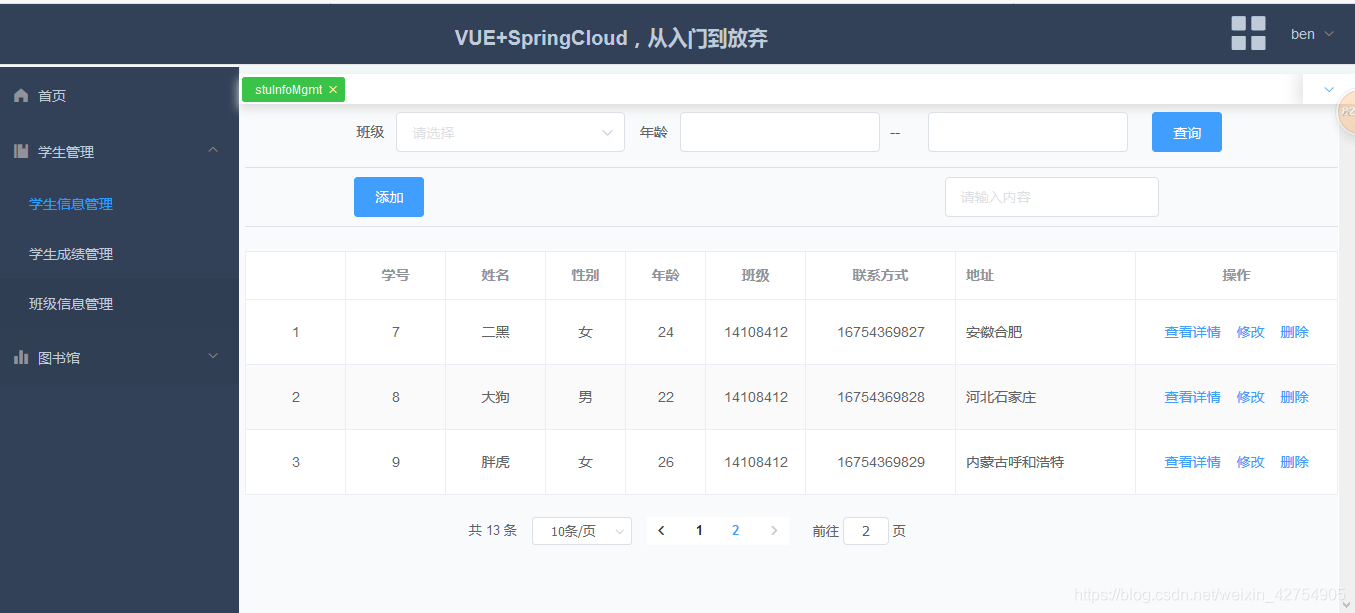1. 新建class表和student表:
因为student表中class_id是class表中的外键,因此需要先新建class表。在插入数据的时候,同样也是先对class表中进行添加数据。student表中的class_id要在class表中的class_id有记录。
2. 新建student微服务
具体过程参考,user微服务构建过程
其微服务的目录结构如下:

3. 修改前端页面
第一部分根据班级或者年龄来查询
中间部分有一个添加按钮和一个搜索框,搜索框来实现提示搜索功能
主体部分是是一个表格,表格中可以进行查看,修改,删除
底部是一个分页。
使用的是elementUI,稍微修改一下就ok,很方便。

4. mybatis的动态查询
在实际的开发当中,经常需要根据不同条件拼接SQL语句。于是动态查询显得尤为重要。
这是我们查询学生信息的代码,可以看到我们传入了很多查询条件所需要的参数:stuName,stuNo,classId,stuAge1,stuAge2 。
其中之所以传入stuAge1,stuAge2 ,是因为我想要查询某一个年龄段的学生。此外,为了满足分页的需求,我们还传入了start和pageSize。start是在从第start个开始查询,pageSize是指一次查询的个数,也就是一页展示的个数。通过一段代码,基本可以满足我们的查询需求。
此外,为了查到相应的学生数量,我们还需要写一个查询数量的sql语句。






















 被折叠的 条评论
为什么被折叠?
被折叠的 条评论
为什么被折叠?








